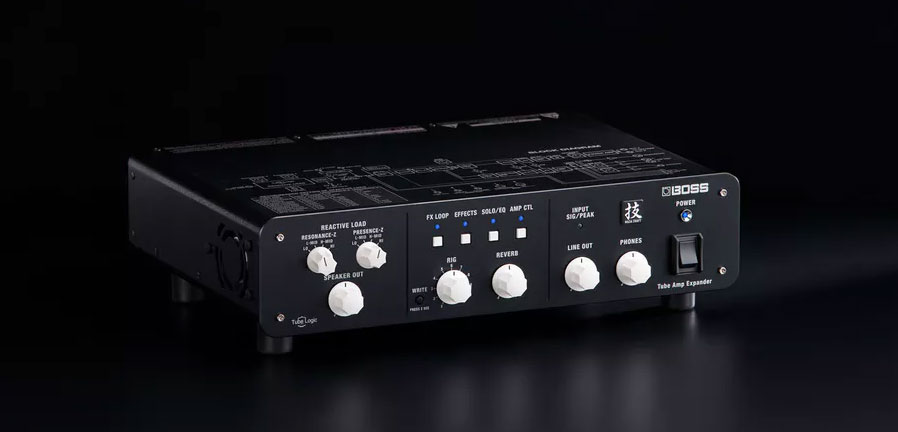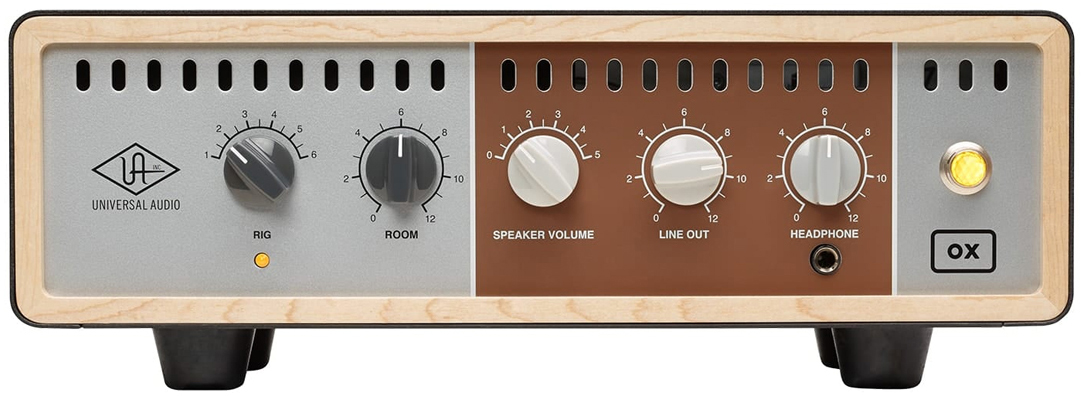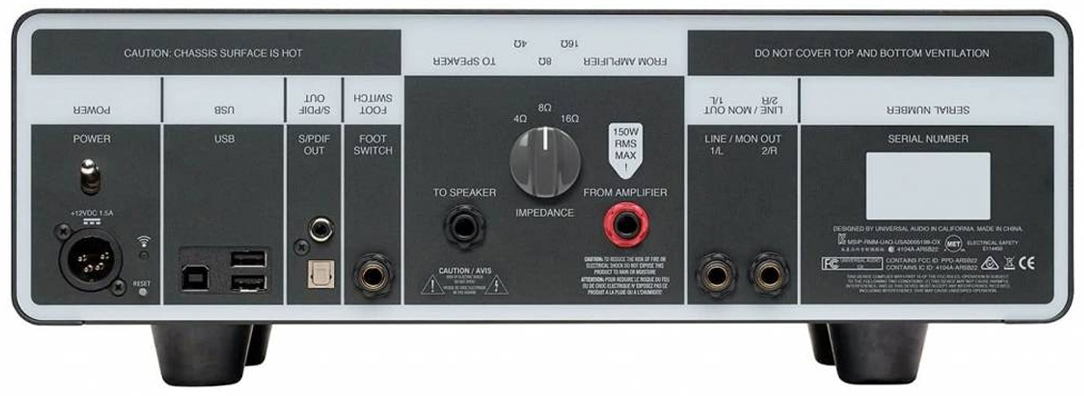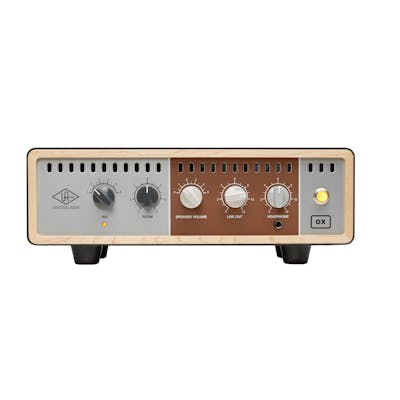At the 2019 NAMM Show, the guitar and music technology industry embraced a plethora of exciting new products – from hundreds of companies. With so many stories to tell and countless releases to cover, identifying the standout gear is always a challenge. The BOSS Tube Amp Expander, though, is definitely one of them.
Fundamentally, the BOSS Tube Amp Expander is a variable active load box. It allows you to get the best tones from your valve amp at sensible volumes. However, there’s much more to it than that. With built-in effects, a 100-watt Class AB power amplifier, MIDI functionality, an external effects loop and much more, this unit is designed to unlock the full potential of your existing amplifier.
However, this isn’t a new innovation. That’s because the WAZA Tube Amp Expander is BOSS’ answer to the Universal Audio OX Amp Top Box. Although the OX was unveiled in 2017, it wasn’t until the following year that this stellar device really took off. And it arguably became one of the hottest guitar products of 2018.
In this article, we take a close look at the features of these innovative load boxes and compare them against one another. But first, let’s explain exactly what a load box is…
What Is A ‘Load Box’?
It sounds obvious, but most valve amps are typically connected to a speaker of some sort. When it comes to producing sound, the speaker is the most important element as it is required to dissipate the energy produced by the amplifier. That makes sense of course, but what happens if you attempt to use a valve amp without a speaker connected to it? Simply put, you will cause serious damage to your amp’s components and internals. This is because the stored energy will have no way of being released, which leads to overheating.
However, you may be thinking “why would I even use my valve amp without connecting it to a speaker?” Well, a lot of modern valve amp heads feature headphone and D.I. outputs to allow for silent recording/practice. In this context, an external speaker is not needed.
But even if the speaker is not in use, you will still need to connect your amp’s speaker-output to some sort of ‘load’. Fortunately, there are dedicated load boxes out there that are used to substitute large and cumbersome speaker cabinets. Often referred to as ‘dummy loads’, these devices serve as basic attenuators and reduce the output of your amp to line-level. This makes it possible to record directly to an audio interface without encountering clipping or distortion, for example.
A load box is therefore a device that ensures that an amp is safely operated without a speaker. The BOSS Tube Amp Expander and Universal Audio OX are both load boxes in their most basic form, with the ability to attenuate. As valve amps sound at their best when cranked, this functionality means that you can find your amp’s tonal sweet spot while taming its overall level to a user-friendly volume. With that definition out of the way, let’s get to contender number 1: the BOSS WAZA Tube Amp Expander.
BOSS WAZA Tube Amp Expander

For decades, BOSS has been at the forefront of guitar effects technology. More recently, it has moved into the amp world too. Constantly innovating and pushing the boundaries, it’s fair to say that their WAZA Tube Amp Expander, though, was more of a reaction than an invention. That’s not to say that it is bad or a ‘copy-cat’ product. No, that’s because the BOSS Tube Amp Expander has a number of features that differentiate it from its Universal Audio counterpart.
As we’ve established; first and foremost, the BOSS Tube Amp Expander is a variable active load box. It is built for those looking to add more flexibility to their traditional valve amp. Not only can it serve as an active analogue power stage, it’s also a cab simulator, impulse response loader and recording interface. For tracking guitars at home or in a studio, these features allow you to experiment with and refine your tones to the greatest of detail.
Featuring 7 mic’d cab emulations with 5 selectable microphone types, you can also load in 4 of your own favourite cabinet impulse responses. So, if you’d rather leave your cab at home when playing live, you can just rely on the IRs and send a line-out directly to a PA system. And for recording, simply match your amp up to the best-sounding virtual cab and mic, and even use the USB output for direct audio recording to your computer!
Tube Amp Expander – Front Panel

BOSS’ Tube Logic Technology handles the attenuation side of this powerful unit, but unlike the OX, you’ll notice that there are far more physical dials on the Tube Amp Expander’s front panel. Among these are the ‘Resonance-Z’ and ‘Presence-Z’ controls. As the Tube Amp Expander has 16 different analogue reactive loads, these adjust the impedance curve. So, not only does one reactive load have a master EQ, but there are rather 16 different analogue sections that will change the response.
Both the BOSS Tube Amp Expander and OX share ‘Rig’ dials, used to recall particular settings that you have created. So for example, if you have several amps or have tuned a single amp for different spaces, you can save your settings and store them as presets. The biggest difference that you’ll notice is that the Tube Amp Expander has 10 recallable rig settings, whereas the OX only has 6.
You’ll also see a group of small buttons on the top row of the unit. Among these is an ‘Effects’ button, which enables the Tube Expander’s built-in reverb and delay effects. The former can be controlled via a dedicated ‘Reverb’ knob, which behaves just like the reverb circuit in a classic amp.
So, if you’re using the Tube Amp Expander in conjunction with an amplifier that lacks a built-in reverb circuit, this gives you a bunch of different reverb/delay types to experiment with via the unit’s software. It even features a compressor and 4 EQs, letting you really tweak your tones to perfection.
Tube Amp Expander – Rear Panel

The connectivity options available with the BOSS Tube Amp Expander are astounding. With parallel outputs that can be connected to two cabs, the WAZA Tube Amp Expander’s 100W built-in Class AB analogue power stage takes even a low-wattage amp up to stage-standard volumes. This is something that the OX does not feature.
With adjustable impedance tuning, you can match practically any amp with the unit for reliable and safe use. It even has the ability to accommodate the most monstrous of volume-pushers; working with amps that boast up to 150W of headroom. The device also sports balanced XLR outputs that can be connected to an audio interface for direct recording, or to a PA system for live use. With a mono output, there are also stereo XLR outputs that let you take full advantage of the Tube Expander’s ultra-wide reverb and delay effects.
Speaking of effects, an FX loop section gives you the opportunity to add your own external pedals. Like any FX loop, it is more suited for moduation and time-based stompboxes. The inclusion of an effects loop is particularly great for users of vintage or boutique-style tube amps, as they typically lack them. Therefore, the WAZA Tube Amp Expander can add far more functionality to even the most basic of amplifiers.
The connectivity options don’t end there either. That’s because the Tube Amp Expander also boasts MIDI connectors, letting you send commands to the device from a MIDI controller. This is perfect for hooking it up with a unit like the BOSS ES-8 pedal switching system. With this, you can alter settings on the Tube Amp Expander completely on-the-fly. The OX does not feature MIDI integration.
Like we mentioned, the Tube Amp Expander’s USB output lets you use the device as an audio interface. This allows you to record guitar parts directly to your DAW/computer, rather than with a microphone. This port also lets you connect to BOSS’ editor software, which fully unlocks the unit’s capabilities. From making adjustments to effect settings and storing presets, this software lets you tweak parameters in superb detail.
Universal Audio OX Amp Top Box

You’ve probably seen the Universal Audio OX Amp Top Box just about everywhere. Its sudden popularity can be attributed to its regular use by YouTube gear demonstrators, and we’re among them. We employ the OX extensively in our Andertons TV videos. Like the BOSS Tube Amp Expander, the UA OX lets you get the lushest tones from your tube amplifier without having to crank it to ear-splitting volumes. And in typical Universal Audio fashion, it goes one step further than being just a load box.
Simply put, the OX encompasses tonnes of sophisticated features. This includes impressive dynamic speaker modelling, as well as cabinet emulation. The OX also has a dedicated app that allows you to really dial-in the unit for specific amps and spaces. This is a very ergonomic feature, something that suits modern musicians specifically.
Whereas the WAZA Tube Amp Expander embraces a contemporary look, the OX tries to keep it traditional. However, this isn’t just in terms of aesthetics. That’s because old-school circuitry meets modern flexibility when it comes to the OX. Featuring Universal Audio’s boutique analogue circuitry, this ensures that none of your core amp tone is affected by digital processing. Instead, think of it as being embellished by the super-convincing modelling technology that the OX has to offer.
OX – Front Panel

Compared to the BOSS Tube Amp Expander, the Universal Audio OX has a far more streamlined interface. This may be a plus for traditionalists, as the OX looks a lot less intimidating to operate. As you can see, it shares the basic dials found on the front panel of the Tube Amp Expander, and they pretty much work in the same way. The only exception is the ‘Room’ knob, but this can be viewed as the equivalent of the BOSS’s ‘Reverb’ control. Essentially, it dictates the amount of room-mic ambience created by the simulated spaces in the OX software.
Speaking of the software, the OX’s accompanying mobile/desktop app is what really brings out its full potential. Of course, Universal Audio are renowned for their amazing DAW plugins and have a wealth of experience with modelling. Luckily for you, they’ve integrated this convincing modelling technology into the OX Amp Top Box.
Fully accessible via the free OX app, you can choose from a wealth of speaker and cabinet models. It’s even capable of emulating speaker breakup and cone cry, so that you can craft the most genuine tones conceivable. The cabinet models are also very detailed and accurately matched to their real-life counterparts. This makes it extremely easy to find the best pairing for your amplifier.
It doesn’t end there either, as the OX also boasts many virtual microphone models. The app even lets you adjust their placement on its simulated cabinets/speakers – now that some deep-editing! From these specifications, it’s clear that the OX is perfect for studio use. It allows you to experiment to your heart’s content, and you can discover a raft of versatile tones with just a few clicks.
The WAZA Tube Amp Expander isn’t the only one of the two units to feature effects, either. That’s because the OX comes with built-in EQ, compression, delay and reverb effects too. The devices also share a thoughtful headphone output, so that you can enjoy the sweetest tones offered by your valve amp without annoying your neighbours!
OX – Rear Panel

The rear panel of the BOSS Tube Amp Expander is quite comprehensive, but the OX is a much simpler affair. The extra routing options available on the BOSS are useful, and will appeal to players with complex rigs. However, the Universal Audio OX gives you the fundamentals without leaving anything essential behind.
Perhaps most importantly, the UA OX has adjustable impedance tuning. With selectable 4, 8, and 16-Ohm settings, most guitar amplifiers can be safely matched with the OX providing that they have a speaker output. The most noteworthy difference here is that the OX only has one speaker-out, whereas the BOSS has two.
On the other hand, the OX does boast balanced line-outs similarly to the Tube Amp Expander. Instead of using XLR connectors though, the OX Amp Top Box uses TRS. The OX also has a S/PDIF digital out, and with these outputs you can easily record directly through an interface or mixing desk. And in a live scenario, you can send the audio signal directly to a front-of-house PA. It’s very flexible!
The UA OX does feature USB integration, letting you connect directly to a computer. This gives you another way of making tweaks to the OX’s deeper settings with the accompanying software. However, you cannot record via the USB ports on the OX. With the Tube Amp Expander – you can.
Conclusion
It’s clear that both of these companies identified a gap in the market to exploit. They observed that guitarists don’t like change, and although it’s a fairly sweeping statement, this is especially true for those that avoid braving the switch from analogue to digital gear. There’s nothing wrong with either of course, but many still believe that valve amps are king when it comes to tone.
With their respective products, both BOSS and Universal Audio sought to build upon this ancient analogue technology and modernise it in a way to not upset the purists. They’ve both done a stellar job, as their product’s feature-sets indicate.
So, which is superior? Well, rather than saying that one is better than the other, it’s easier to simply split these products into two camps. The Universal Audio OX will suit modern producer-types, as the device is more dependent on its accompanying software. As we alluded to, the amount of fine-tuning you can do with the software is incredible. Even the most fastidious of tone-chasers could spend hours tweaking their setup with it.
The BOSS Tube Amp Expander, while boasting a similar software package, is much more tactile. With a greater amount of physical dials, the Tube Amp Expander is easier to tweak on-the-fly without always relying on its software. You could therefore say that the BOSS Tube Amp Expander is better for live scenarios, whereas the OX Amp Top Box is more suitable for the studio.
To an extent, this somewhat reflects the ethos of both of these companies. After all, BOSS is mostly a guitar-orientated brand and Universal Audio has a long-standing association with recording enthusiasts. Frankly, they’ve both nailed it!
Want To Learn More?
To discover the full capabilities of these units, our Andertons TV video below lets you see these units put into practice – head to head!





Responses & Questions